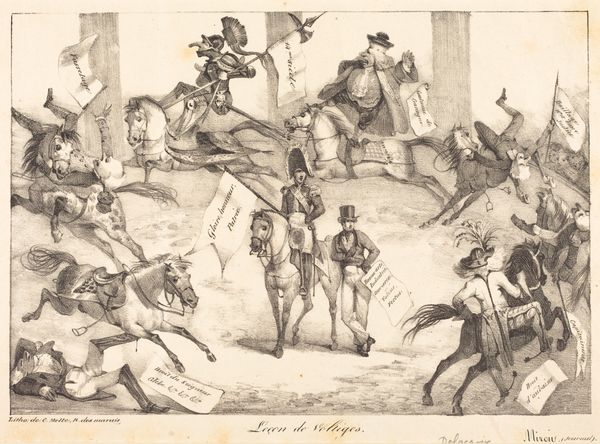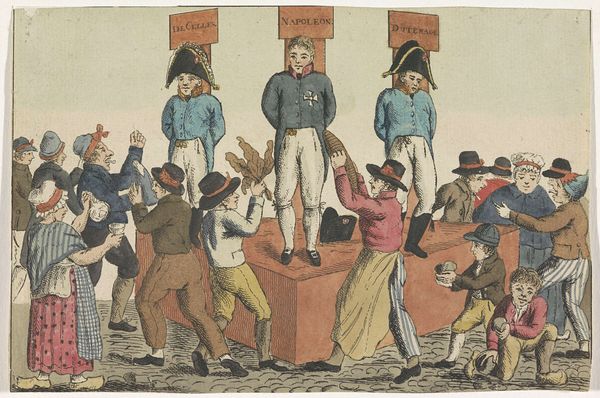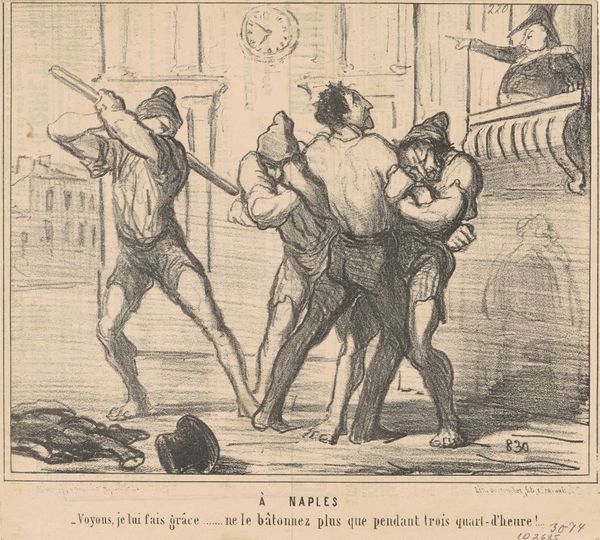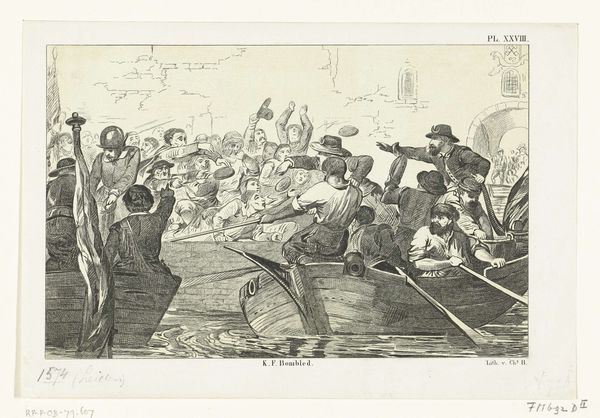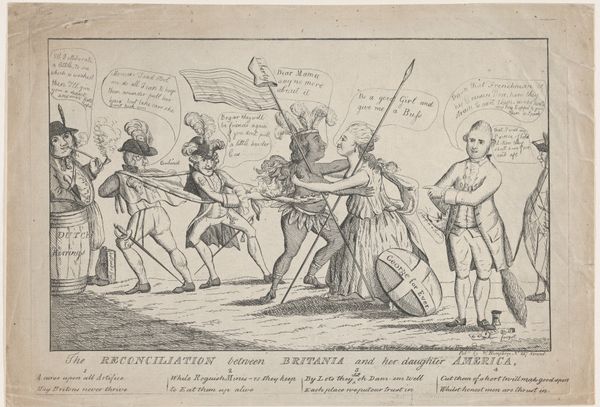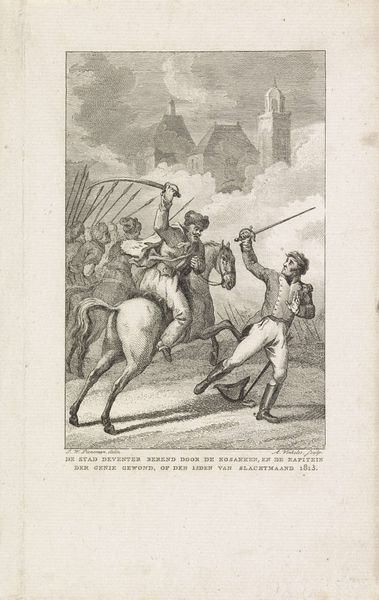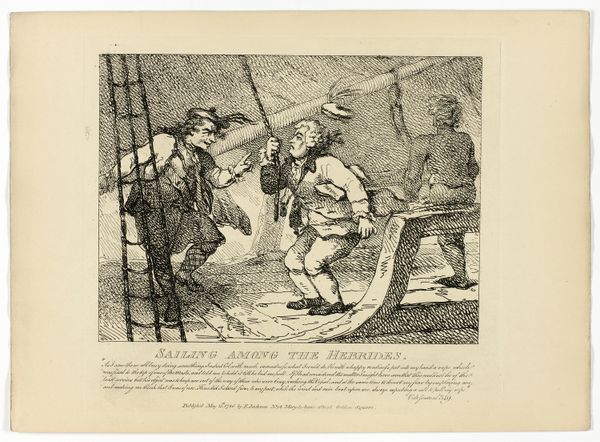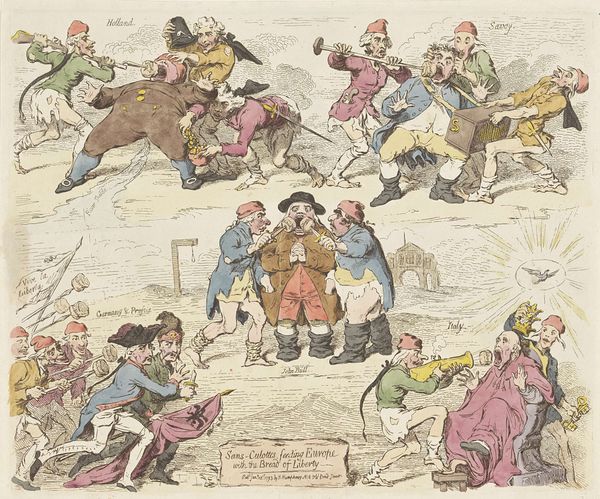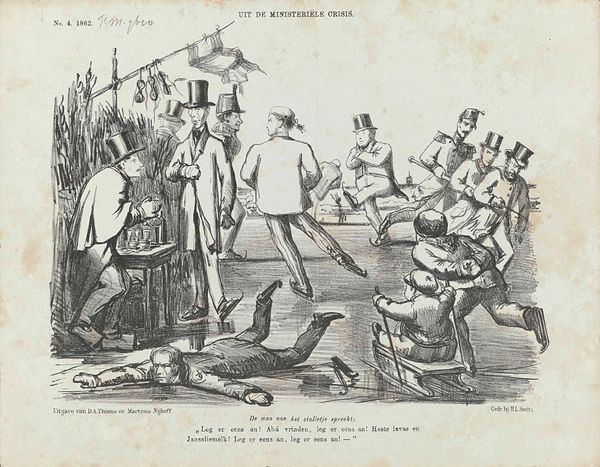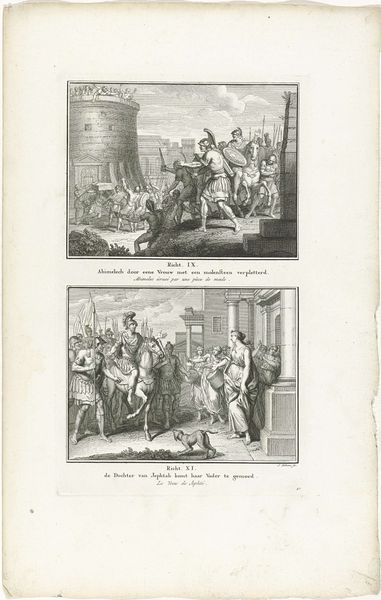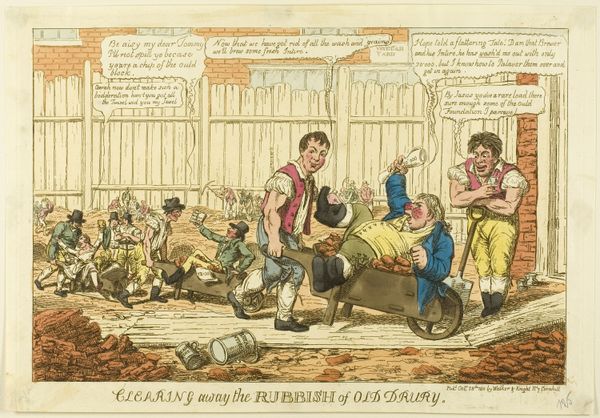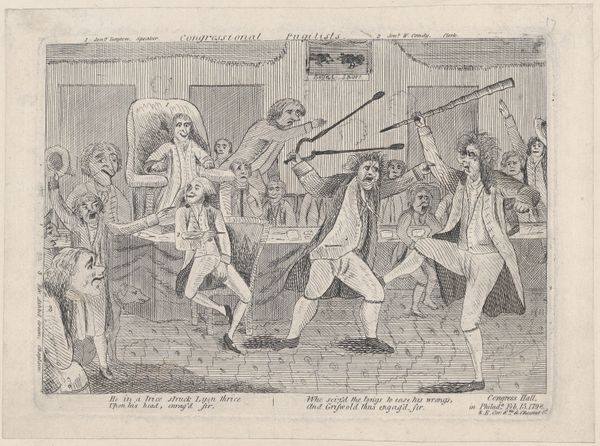
print, etching
#
neoclacissism
#
toned paper
#
light pencil work
#
quirky sketch
#
narrative-art
# print
#
etching
#
caricature
#
pencil sketch
#
sketch book
#
figuration
#
personal sketchbook
#
folk-art
#
line
#
sketchbook drawing
#
watercolour illustration
#
genre-painting
#
history-painting
#
storyboard and sketchbook work
#
sketchbook art
#
realism
Dimensions: height 400 mm, width 510 mm
Copyright: Rijks Museum: Open Domain
Curator: This etching, tentatively dated 1787, is titled "Patriotse hemelvaart," or "Patriots Ascension." It’s attributed to Johann Heinrich Ramberg, and it's part of the Rijksmuseum's collection. Quite the satirical commentary! What are your first thoughts? Editor: It’s striking. There's a darkly comic quality—the chaotic scene with the man tumbling from the wall is oddly playful. It definitely speaks of unrest, of upheaval, but delivered with this strange lightness, like a tragicomedy in visual form. Curator: The tumbling figure, presumably one of the "Patriots," is certainly the focal point. But look at the figures poised to catch him with that sheet – they seem rather amused, almost anticipating the fall. And the demons in the upper left… such vivid symbolic embellishments. Editor: Exactly. The demons add a layer of moral judgment. The "Patriots," if that's who the falling man represents, aren't just experiencing a political downfall, it's also being depicted as a descent, almost hellward. Who are these "Patriots" precisely in their socio-historical context? Curator: These so-called Patriots were a political faction in the Netherlands during the late 18th century, advocating for more democratic governance and challenging the power of the Stadtholder, or chief executive. The symbolism here—the fall, the leering figures—clearly paints a less-than-flattering picture. There's an inversion of sorts of the more uplifting ideas surrounding Neoclassicism in this era, replaced with sharp political critique. Editor: This caricature really lays bare the conflict of the era, doesn’t it? I mean, the artist has certainly chosen to side against the Patriots and their challenge to power, turning them into a subject of ridicule and highlighting the messy, undignified nature of political struggle, regardless of the righteousness of one's cause. It underscores how revolutionary movements, however high-minded, can appear from the outside as farcical. Curator: Indeed. This image feels especially pointed. It goes beyond simply documenting events. Ramberg imbued the print with an almost theatrical narrative. We could reflect on this being more than just satire but instead commentary on the perils of dissent when met with entrenched power. Editor: Absolutely, and how easily revolutionary idealism can be twisted or delegitimized. A fall from grace—a 'hemelvaart’ in reverse—indeed. Thanks, that clarified much about the work for me. Curator: Agreed. It makes one ponder the long and continuing tradition of how satire is able to turn historical moments into a moral narrative.
Comments
No comments
Be the first to comment and join the conversation on the ultimate creative platform.

